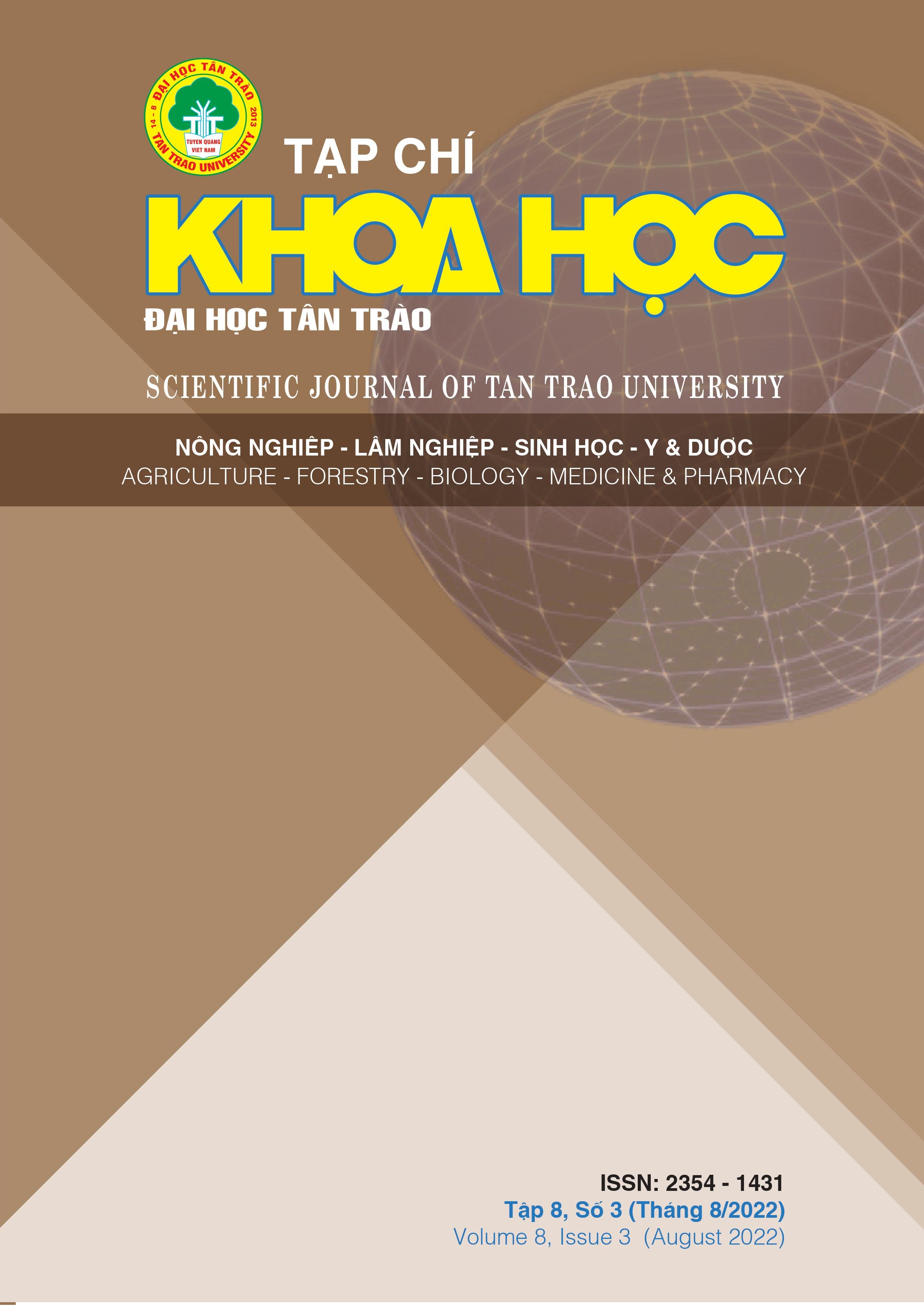THE STUDY OF ZOOBENTHOS COMPOSITION AND DISTRIBUTION VUNG ANG - HA TINH COASTAL AREAS
DOI:
https://doi.org/10.51453/2354-1431/2022/789Keywords:
Vung Ang, Zoobenthos, Gastropoda, Crustacea, BivalviaAbstract
Research on species composition and distribution of Zoobenthos in the submergence area of Vung Ang 1 thermal power plant - Ha Tinh was conducted in September 2019. The results showed that a total of 113 species belonging to 7 groups (Crustacea, Bivalvia, Gastropoda, Polychaeta, Echinodermata Chordata and Scaphopoda). Three groups of benthic animals that dominate the wetland ecosystem of Vung Ang are Bivalves with 49 species, Gastropoda has 44 species and Crustacea has 11 species. The distribution of benthic species in the coastal area with 34 species is higher than that in the offshore area with only 31 species.
Downloads
References
[1]. Binh N. T., Van N. C. (2021), Research on species composition and distribution of benthic fauna in the coastal area of Ninh Binh province, Science Journal of Tan Trao University. No 22. P 128-141.
[2]. Binh N. T., Khac H. N., Ngan D. K, Hang N. T. T. (2021), The composition of large benthic species in the flooded area of Quy Nhon bay, Binh Dinh province, Science Journal of Tan Trao University. No 21. P 119-129.
[3]. Duong T. T., Vinh C. T., Tuan T. M., Dang N. Q. (2001), Some common fish species in the sea of Vietnam, Ministry of Fisheries, Ha Noi, P195
[4]. Nhuong D. V., Khac H. N. (2006), Preliminary data on crabs (Brachyura) in coastal mangroves from Tinh Gia (Thanh Hoa) to Hoi An (Quang Nam), Journal of Biology. Volume 28(1), P 35-39.
[5]. Thinh P. V., Binh N. T., Ha V. H. (2021), Research on species composition and distribution of benthic fauna in the waters of Nam Dinh - Thai Binh, Science Journal of Tan Trao University. No 22. P 150-163.
[6]. Arthur Anker and Ivan N. Martin (2000), New records and species of Alpheidae (Crustacea: Decapoda) from Vietnam. Part I. Genus Salmoneus Holthuis, 1955, Atlantic Volum 54, p. 295-319.
[7]. Blakemore R. J. (2007), Origin and means of dispersal of cosmopolitan Pontodrilus liters (Oligochaeta: Megascolecidae). European Journal of Soil Biology, 43 (2007), p. S3-S8.
[8]. Cutler B. Edward (1994), The Sipuncula. Their Systematics, Biology and Evolution, Comstock Publishing Associates a division of Cornell University. p 3-350.
[9]. Dai Ai-yun and Yang Si Liang (1991), Crabs of the China seas. China Ocean Press Beijing. p. 118-558.
[10]. Han Raven, Jaap Jan Vermeulen (2006), Notes on mollusks from NW Borneo and Singapore. 2. A synopsis of the Ellobiidae (Gastropoda, Pulmonata, Vita Malacologica 4: 29-62.
[11]. Menon, A. G. K (1977), A systematic monograph of the tongue soles of the genus Cynoglossus Hamilton-Buchanan (Pisces: Cynoglossidae) Smithsonian Contributions to Zoology, No 238:1-129.
[12]. Jocelyn Crane (1975), Fiddler crabs of the World. p. 15-327.
[13]. Kent E. Carpenter and Volker H. Niem (1998), The living marine resources of the Western Central Pacific.FAO. Rome. Volume 1. p. 124-646.
[14]. Nora F. Y. Tam and Y. S. Wong (2000), Hong Kong mangroves, City University of Hong Kong press. 148 p.
Downloads
Published
How to Cite
Issue
Section
License

This work is licensed under a Creative Commons Attribution-ShareAlike 4.0 International License.
All articles published in SJTTU are licensed under a Creative Commons Attribution-ShareAlike 4.0 International (CC BY-SA) license. This means anyone is free to copy, transform, or redistribute articles for any lawful purpose in any medium, provided they give appropriate attribution to the original author(s) and SJTTU, link to the license, indicate if changes were made, and redistribute any derivative work under the same license.
Copyright on articles is retained by the respective author(s), without restrictions. A non-exclusive license is granted to SJTTU to publish the article and identify itself as its original publisher, along with the commercial right to include the article in a hardcopy issue for sale to libraries and individuals.
Although the conditions of the CC BY-SA license don't apply to authors (as the copyright holder of your article, you have no restrictions on your rights), by submitting to SJTTU, authors recognize the rights of readers, and must grant any third party the right to use their article to the extent provided by the license.


